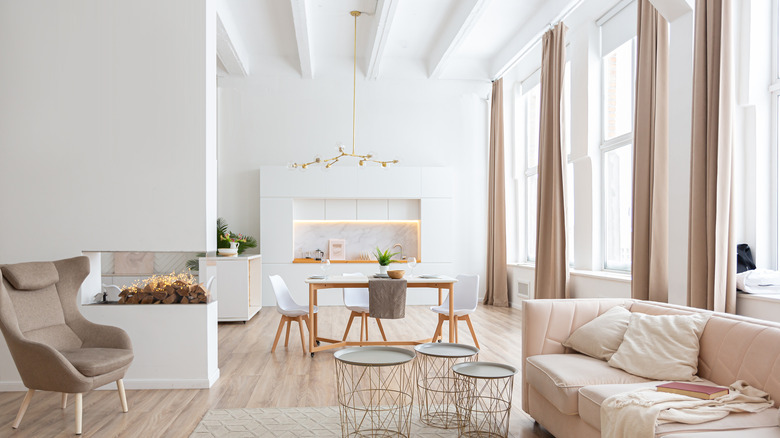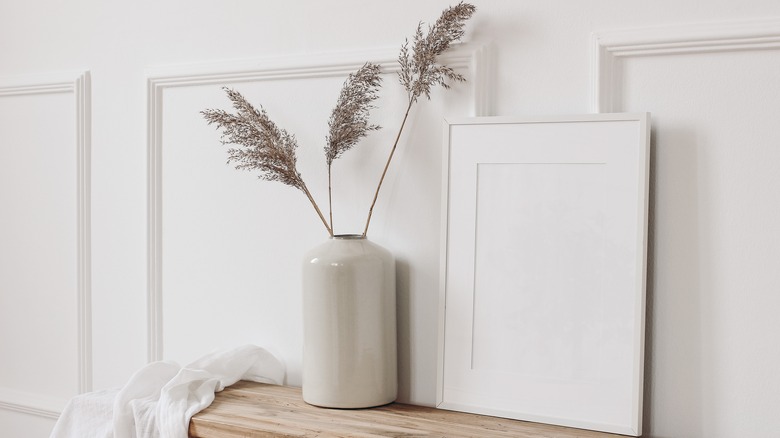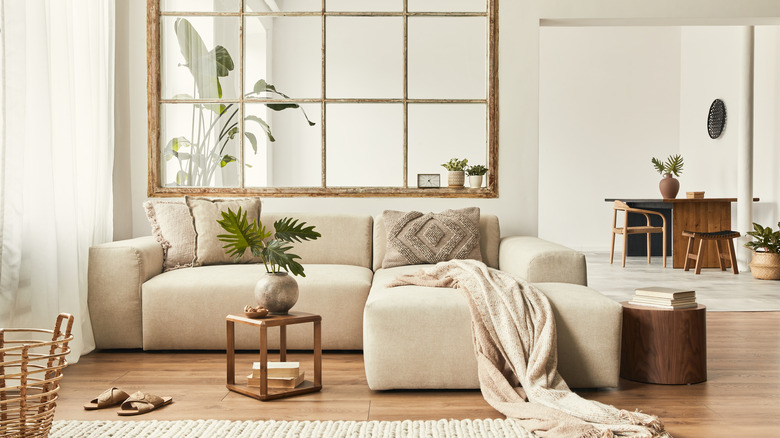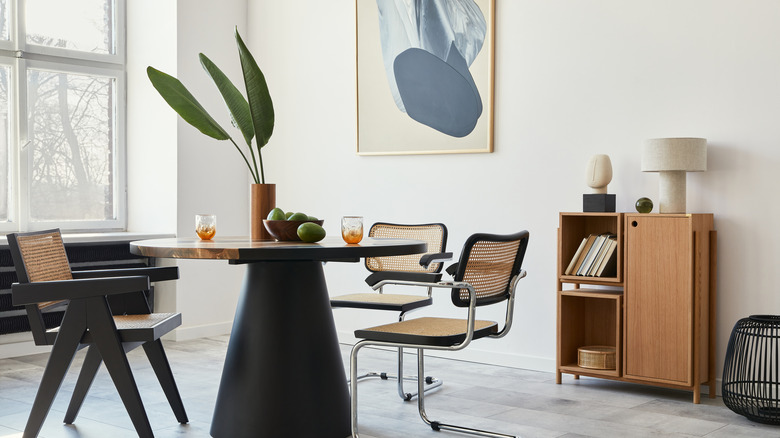4 Things You Should Consider Before Painting Your Walls White
The go-to neutral for anything from cheap and cheerful rentals to high-end art galleries, it's safe to say that white still reigns supreme as one of the most popular wall paint colors. But while anyone can slap a bit of white paint on a wall, taking the time to properly prepare the space, and perfect the shade and sheen of your paint, are what truly make the difference between a room that looks dull and boring and one that feels bold and intentional.
According to Livingetc, the size of the room, what it's used for, and how much natural light it receives are all crucial things to consider when you're deciding whether to go for a warm, cool, or neutral-toned hue. And once you've perfected the pigment, you'll need to make sure your shade is available in a finish that suits your space — whether that's matt, satin, or gloss. But, again, it's not just a simple choice; taking care of both picking the right paint and applying it carefully are key if you're after gorgeous white walls.
1. Preparing your walls is especially important when painting them white
Clearly, preparing your walls before painting is an important first step regardless of the paint color — but it's especially crucial if you've gone for a white shade, as any imperfections will really stand out. Plus, without a good base, your paint will likely end up patchy or even peeling.
For a brilliant base, start by patching up any dents or cracks with caulk, and use filler to cover nail or screw holes. Then you'll need to sand the walls down to ensure you're working with a smooth surface before thoroughly cleaning them with a sugar soap solution to get rid of all dust and dirt.
Next is the most important step: priming. For an even finish that's completely free of imperfections, Head of Creative at Farrow & Ball, Charlotte Cosby, recommends always using a primer — as well as an undercoat — before applying two coats of your chosen white paint (via Ideal Home).
2. Create depth with different textures and paint finishes
There's something very flat and dull about a room painted all over in the same white paint. To make an all-white room look elegant rather than whitewashed, you'll need to add depth by making sure the walls, ceilings, and trims are each painted in a very subtly different shade, or even just try using another style of sheen. With its low shine and ability to hide imperfections, matt works well on walls and ceilings. Because it's so durable, mid-sheen satin is well-suited to baseboards and window frames, while a gorgeous gloss finish brings a sophisticated shine to woodwork and architectural trim.
Layering in softness is also crucial to ensure your bright white room doesn't look too sterile. According to Maria Killam, adding textural elements — such as cushions, rugs, and window treatments — will not only bring warmth to your white room but also dampen sound and reduce the risk of the space ending up with too much of an echo.
3. Consider the room's lighting when choosing the undertones
Far from a small selection, paint brands typically have hundreds of different shades of white for you to choose from — all possessing slightly (or significantly) varied undertones. Essentially, whites fall into one of three categories: cool-toned, warm-toned, or pure white. While pure whites have few undertones — and are therefore relatively versatile — cool whites have more blue, green, and black pigments, while warm whites will have more red, orange, or yellow tinges.
According to Ideal Home, the amount of natural light a room gets can impact the paint's undertones and change how it looks. The general rule of thumb is that cool whites work well in south-facing rooms, as they help offset some of the sunlight, while warm whites are definitely the right choice for north-facing rooms with little natural light, as they help bring in some much-needed warmth. So before you fully commit to a specific shade, make sure you test it on your walls and see how it looks at different times of the day.
4. Make your white pop by picking accent colors with similar undertones
If you want your white walls to really pop, bring in a contrasting accent color that still works well with the undertones of your shade. You don't want to mix and match your undertones, so bring in subtle elements of cool blue and green if you've gone for a snowy or powder white tone, and stick to warm reds, yellows, and oranges if your chosen white shade is closer to ivory, rice or merino wool in its tone.
When it comes to accent colors, you'll unsurprisingly have the most freedom if you've painted your walls a pure white, as these shades have fewer undertones and just appear really simple and crisp. In fact, according to Angi, if you're planning the whole room around a specific bold or neon sofa or chair, pure whites are definitely your best bet. And when in doubt, remember that any kind of white shade will most likely look great when contrasted with black.




